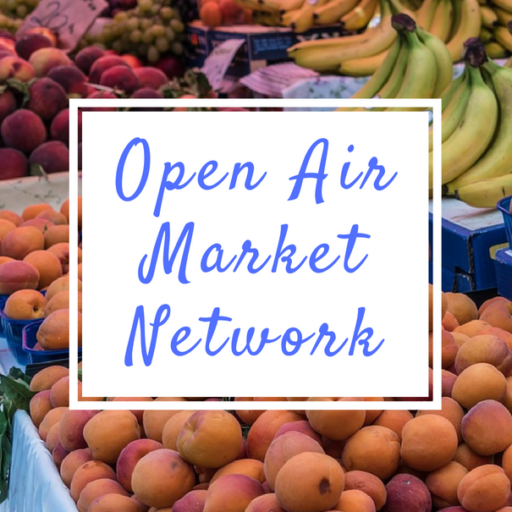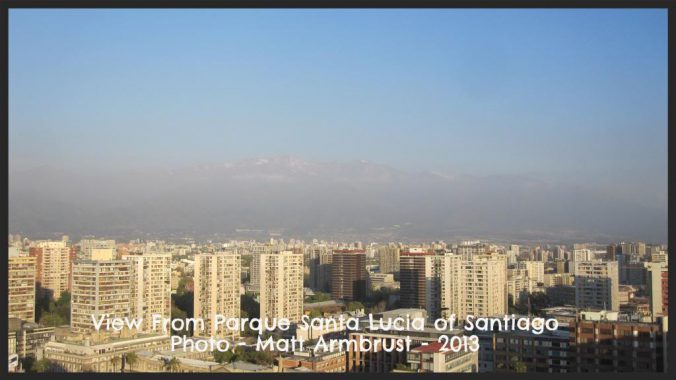In early October, prior to ending my time in South America and catching a flight to Central America for the remainder of my travels and work, I spent a few days in the tremendously historic capital of Chile, Santiago. Amongst one of the most affluent countries in Latin America, Santiago and Chile as a whole from my perception was more European influenced, in line with other cities I visited like Buenos Aires.
With a modern cosmopolitan vibe surrounded by hundreds of years of iconic architecture and cultural institutions seemingly dropped in from Spain and other European countries at the expense of indigenous communities as exemplified during colonial expansion, it seemed like an historic version of Portland, Oregon, but with deep rooted history and tradition, local, yet corporate tastes, and of course youthful artistic expressionism and hipsterdom running wild through university and bohemian areas like the Bellavista neighborhood amongst others.
On my way from visiting the home of epic poet Pablo Neruda, who can only be described as one of the original poetic gangsters of love, to the Museo De La Memoria y De Los Derechos Humanos (The Museum of Memory and Human Rights) I had the opportunity to view several different vending approaches common and notable to Santiago. However, prior to speaking about the vending, the Museo De La Memoria was perhaps one of the most powerful experiences of my life as a human, a historian, and a seeker of truth, justice, and inalienable human rights, with my visit coming almost 40 years to the date of September 11, 1973, the beginning of the Coup d’etat by General Augusto Pinochet’s forces. The free museum is kept accessible to pay tribute to and as a chilling reminder of the thousands of victims of the CIA-backed 1973 Coup d’état of democratically elected president Salvador Allende and subsequent military dictatorship of Augusto Pinochet lasting almost two decades. However, despite the horrid torture, execution, and state fascism of the Pinochet regime, the most impactful and salient effect of the authoritarian time was the installation of neoclassical or as contemporarily defined as “neoliberal” economic models emphasizing the theories and applications of University of Chicago Economics professor Milton Friedman and his cadre of Chilean and American born pupils of his economic brand, known best as the “Chicago Boys”. Privatization of public assets, removal of governmental interventions and welfare statism programs, austerity, and above all free market, laissez-faire economics are as succinct as I can put this economic theory approach and real world implementation. Unfortunately, the rhetoric and theory of neoliberalism, much like it’s ideological opposite and adversary, Marxism, has failed to match up in reality providing horrendous results while implemented at the barrel of a gun at the expense of democracy, human rights, and liberty. Neoliberal reform has often meant policies amplifying big over small business and ultimately bureaucracy over the individual causing drastic effects for individual citizens, human rights, institutions, and independent, small businesses, producers, and vendors facing globalization, state support of multinational corporate entities, and regulation of markets, permitting, space, and others.

I will comment more in future blog posts regarding this particular economic theory and its implementation and direct and indirect effects. Specifically, pertaining to the system’s impact on vendors and markets, and in greater detail on the phenomenon of larger, multinational shopping and food market chains buying out and consolidating smaller competitors or just outright using economic force and economies of scale to outcompete and drive out local vendors and producers. Several authors and books detail the phenomenon of neoliberalism and the coup d’état in Chile better than I can articulate here such as David Harvey’s A Brief History of Neoliberalism, Naomi Klein’s The Shock Doctrine, Balkan Historical Writing Icon Misha Glenny’s McMafia, John Perkins, and the unofficial historian of Latin America, the seminal Eduardo Galeano.


Politics and economic systems aside, Santiago was unique in comparison to other cities markets and vendors in that street marketplaces were very common in a city with a European flair and ripe with formalities and sophistication. Vendors selling refreshments, cigarettes, newspapers, and periodicals amongst other convenience items, from my experience throughout the city, were stationed in small sidewalk kiosks, whereas in other countries including the U.S. they would most likely have a corner or convenience store in a building. Nearby the government Palacio de La Moneda and the University of Chile on the main boulevard Liber Bernardo O’Higgins, hundreds of vendors of various wares from candy to newspapers to socks to jewelry amongst others set up shop to capture the passing market of thousands of professionals, students, and other Santiago residents exiting from the nearby transit stops at the end of the working and/or study day. This scene was similar nearby the bridge connecting the university and bohemian life of the Bellavista Neighborhood to museum and government districts. Across from open al fresco cafes, street vendors with various items from cigarettes and magazines to street food such as empanadas, pizzas, and hamburgers flanked small tented artisanal clothing and jewelry markets, flush with loads of the deep azure blue Lapis Lazuli, Chile’s national gemstone from mines in the Andean Cordillera mountain range, as well as discounted contemporary fashion items such as leather footwear and knockoff luxury clothing. Below the idyllic Parque Santa Lucia, one of the most beautiful vista locations to see all of Santiago and the towering Andean mountain range surrounding the city, was a small artisanal market with a variety of typical handcrafts, and jewelry geared toward tourists, but also contained processed food goods like herbal tonics, coffee, and chocolates.

However, the most impressive vending and market I encountered was the intense seafood vending meets the mix of upscale waiter-laden restaurants contrasted with bar top eating stands at the Mercado Central. Perhaps one of the pinnacles of fresh seafood markets for vendors, buyers, and eaters of all tastes, the Mercado Central blew away any traditional formal seafood market I’ve experienced. Whether it be from the ornate vaulted iron roof structure or the grand open hall in the center full of various fresh seafood eateries surrounded on the perimeter by dozens of seafood and produce vendors selling the day’s catch while trying to cajole locals and tourists alike into patronizing their seafood stands or their buyers food stands and restaurants. Opened in 1872 and looking like a building straight out of somewhere like Tuscany, Italy, Mercado Central was the real deal, making Pike Place Market in Seattle or Fisherman’s Wharf in San Francisco seem little more than a glorified tourist trap version of a Long John Silver’s fast food joint.

This was perhaps one of the best “formal” seafood experiences of my life, save for fresh caught anything made into ceviche on a beach or a boat or a streetside vendor cart or cabinet in a small coastal community anywhere far from the grasp of mainstream Western society. Salmon, crab, shrimp, and an innumerable amount of other species of fish lined the tables of the outer corridor vendors while simultaneously lining the menus of the eateries in the center. I seriously spent about two hours eating everything I could from fried cheese and shrimp empanadas, grilled salmon, and conger eel, while washing it down with a bottle of Cabernet Sauvignon from a local winery, all at a very reasonable price. Stuffed and in a daze walking through the market, a pair of local television reporter bombshells stopped to interview me to ask me why I was here, and unable to step up to the camera to deliver, I uttered little more than the words “MARISCOS” (seafood in Spanish), fearful perhaps that if any more words would come out, my intense seafood feast would follow back out my mouth as well, but more likely intimidated by the camera and the striking beauty of my interviewers. Leaving the market to enjoy the rich smoke of a mapacho cigar picked up on my travels through Peru, the feelings of contentment and bliss were an understatement not only from the meals, but from the vibe and history of the city.

Walking the streets of Santiago, past the ghosts of fascists and their victims and the poets, musicians, and artists who vilified or celebrated them, was more than I could have ever imagined I could have fit in during my brief two days in the capital of Chile. Pained by the past, yet buoyed by the optimism and hope of the future, a quote from Pablo Neruda sums up my experience in Santiago, “You can cut all the flowers, but you cannot keep Spring from coming.”
Best,
Matt
Note: This is the first post from the author since November 2013 to which my posts from my 10 country work and travel trip throughout Latin America were delayed for multiple reasons, even after my return stateside around New Year’s 2014. A broken foot and gashed leg near the Mayan Pyramids of Tikal, Guatemala, unyielding amounts of adventure and new company both friends and foes, technical difficulties with my online photo cloud provider whom shall remain nameless, markets, markets, and more markets, continued occupation of free time working for clients in Nicaragua and in the U.S. amongst other projects, and perhaps the main reason for the pause in my writings was due to the passing of one of my heroes and family members in my Grandma Dee in November. A mother, grandmother, teacher, historian, dairy farmer, auctioneer, business woman, philanthropist, chicken egg vendor, ebelskiver cook, environmentalist, proud Dane, and above all someone who always encouraged my travels and intellectual development as her mother who emigrated from Denmark did with her, the remainder of my posts from my travels are dedicated in her memory and her everlasting spirit.



Leave a Reply
You must be logged in to post a comment.